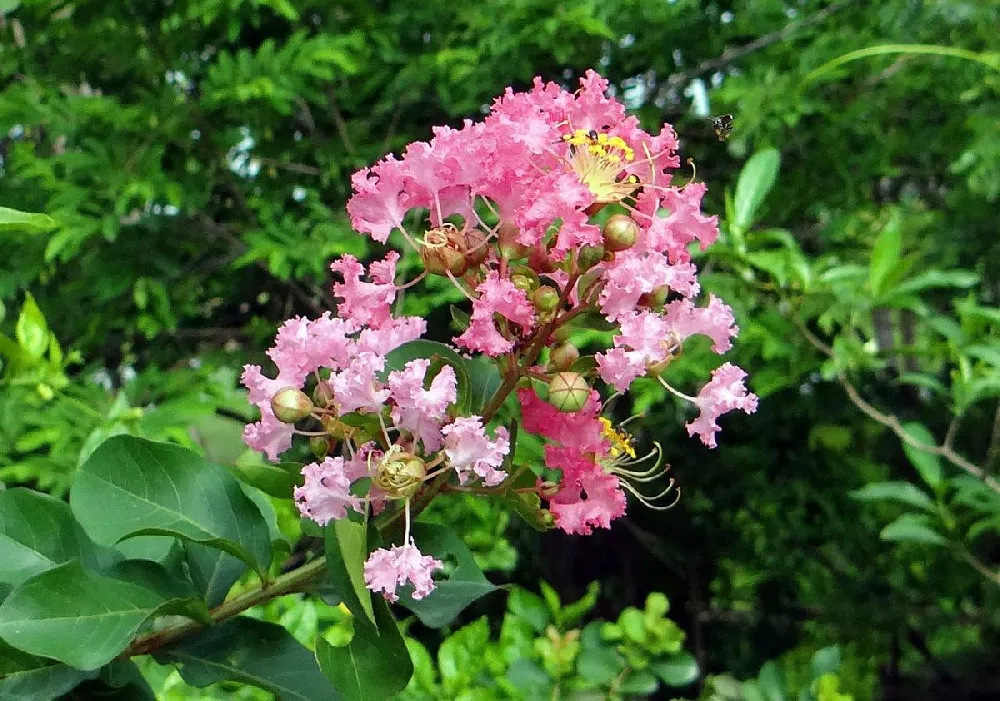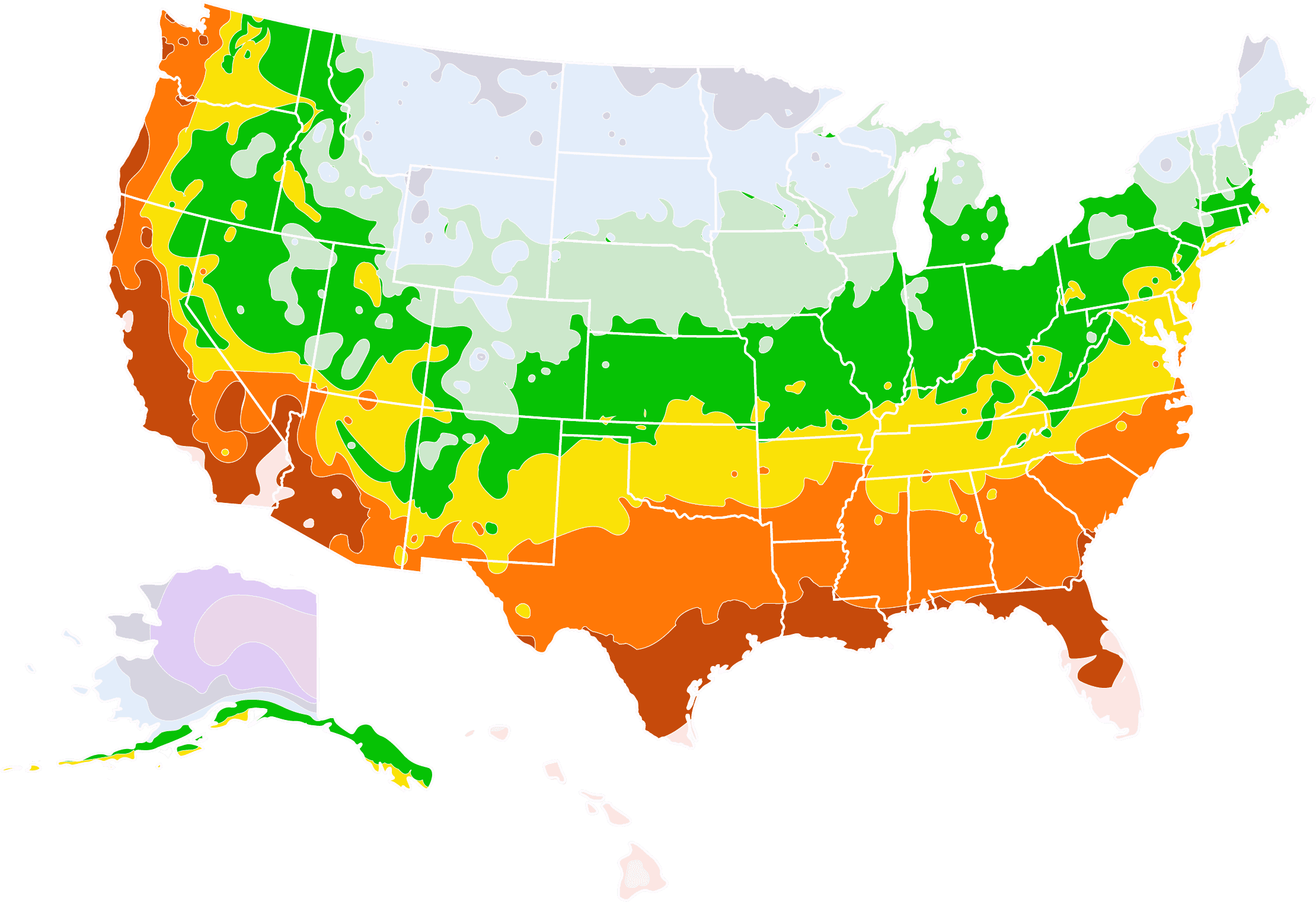- Home >
- Flowers >
- Trees and Plants with Pink Flowers >
- Tuscarora Crape Myrtle
Tuscarora Crape Myrtle for Sale - Buying & Growing Guide
- Ships in 1-2 days
- 1-Year Warranty Eligible
- Pots or accessories are not included unless specified in the product options.
Shipping Details:
Products shipped through FastGrowingTrees.com. Once your order is shipped, you’ll receive an email with a tracking number and estimated delivery date. Most orders will ship immediately.
The Tuscarora Crape Myrtle is yet another example of how the crape myrtle family consists of some of the most attractive plants in existence. In this case, the species known as Lagerstroemia indica, 'Tuscarora,' is a medium-sized tree with beautiful pinkish flowers, textured bark, and leaves that show off deep hues of red and yellow in fall. Along with that incredible beauty, the Tuscarora Crape Myrtle also boasts a quick growth rate and an ability to adapt well to most growing locations.
- Tuscarora Crape Myrtle flowers appear in dense clusters with a coral color.
- This tree's bark is light brown with a lovely exfoliating texture.
- The foliage shows impressive shades of red and yellow in fall.
Plant Care
Sunlight

A Tuscarora Crape Myrtle should grow where there are at least six hours of direct sunlight per day.
Watering
Water this plant whenever the first few inches of soil have become dry.
Fertilizing

Fertilize this tree once per year in the early spring, using a fertilizer with an even balance of nutrients.
Planting and Care
Planting instructions
Begin your planting process by digging a hole that is as deep as the root ball is tall and about twice as wide as the root ball or more. Ideally, the location in which you create this planting hole should sit in at least six hours of direct sunlight per day. It’s also best if the soil is moist with good drainage and a reasonable amount of organic nutrients. However, the Tuscarora Crape Myrtle can adapt to several soil types. Finish the planting process by backfilling the hole while watering, then covering the area with a layer of mulch.
Watering and nutrients
Each year in early spring, you can apply a general-purpose fertilizer that contains an equal volume of each main plant nutrient. Watering is also a simple process for this tree. While your Tuscarora Crape Myrtle is young and attempting to establish itself, you should give it enough water to maintain consistent soil moisture. Once somewhat mature, you can water this tree based on soil moisture. Push your finger into the ground near the plant’s roots to feel for moisture. If the first three inches of soil are dry, it is time to give your tree some water.
Pollination
Nearly all gardeners plant a Tuscarora Crape Myrtle with the goal of enhancing the aesthetics of their yard rather than aiming to produce a viable harvest. However, the pollination process of this tree is worth understanding if you wish to grow one. In spring, this tree will provide many nectar-filled flowers that attract beautiful pollinator species, including bees and butterflies. Since the Tuscarora Crape Myrtle is a self-pollinating species, it is easy for a single tree to pollinate itself successfully.
Pruning
Your Tuscarora Crape Myrtle may grow well without much pruning but pruning in the correct manner at the right time of year can help ensure this tree remains healthy and shows off its best attributes to the fullest. In late winter, you should prune this plant to remove any branches that are broken, dead or diseased. Later, when this plant is in bloom, you should perform deadheading any time you notice a spent flower cluster. Deadheading during bloom time will help encourage this plant to bloom more.
Pests, diseases and animals
Diseases can arise in Crape Myrtle trees, with some of the most common ones being powdery mildew, leaf spot and more. Thankfully, the Tuscarora Crape Myrtle variety proves to be well-capable in avoiding those diseases, which lessens the amount of maintenance you’ll need to do to keep this plant’s health intact. Along with disease, pests could also infest your Tuscarora Crape Myrtle on occasion. Common garden insects, including aphids, scale and Japanese beetles, are some of the most likely to arrive at this plant.
Achieving maximum results
Don’t plant a Tuscarora Crape Myrtle Tree unless you have the space to accommodate it. Not only is this crape myrtle variety a fast-growing cultivar, but it is also larger than many other crape myrtles, as it can reach more than 20 feet tall. As such, you should give your Tuscarora Crape Myrtle plenty of vertical and adjacent space into which it can expand. You should also be ready to prune this plant to remove any branches that begin to crowd the canopy or look overgrown.
FAQs
Can you grow a Tuscarora Crape Myrtle in a container?
It may be possible to grow a Tuscarora Crape Myrtle in a container, as most crape myrtles can adapt to this growing environment as long the container has good drainage. However, planting a Tuscarora Crape Myrtle in a pot may not be the best approach for a few reasons. First, this plant is on the larger side; so, it will be difficult to find a large enough container for a more mature plant. Also, this plant grows very quickly, meaning it could outgrow its container and require frequent repotting.
What color is the Tuscarora Crape Myrtle Tree?
The Tuscarora Crape Myrtle is impressive for the many colors that it presents throughout the year. In spring, the flowers bloom with coral hues. During the summer, the leaves show a vibrant green that then transforms to red and yellow in the fall. All along, the bark is attractive for its light tan appearance and an exfoliating pattern.
Where was the Tuscarora Crape Myrtle created?
The Tuscarora Crape Myrtle was developed in the Washington, D.C., National Arboretum. The initial goal in creating this cultivar was to produce a crape myrtle that would have a stronger resistance to powdery mildew than others. The Tuscarora Crape Myrtle has delivered on that promise of disease resistance, which, along with this plant's immense visual appeal, has made the cultivar popular throughout many parts of the United States.
Compare Similar Products
You can't add more Product Name - Product size to the cart.
OK








